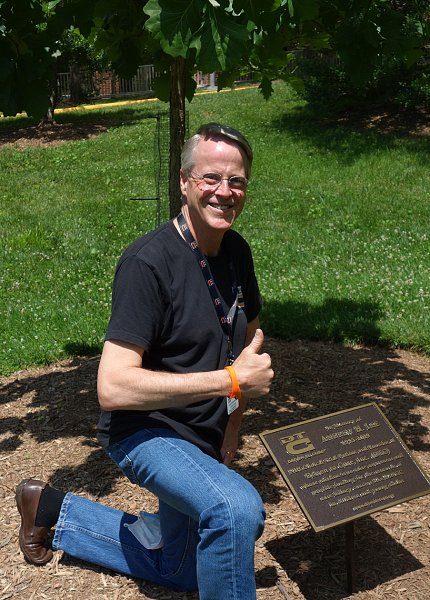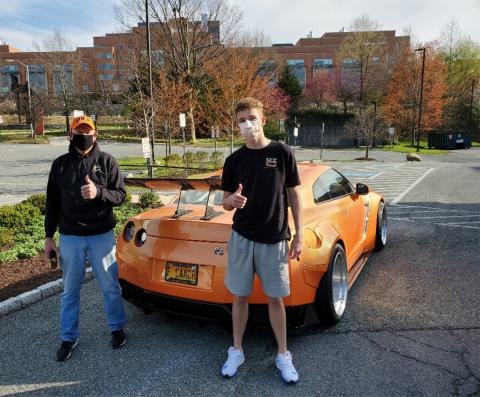NIH Remembers Patient Advocate Lee

Photo: Dana Talesnik
NIH mourns the passing of Bruce Hatch Lee, a Maryland real estate developer who became a patient advocate for rare kidney cancer. Lee died at his home in Kensington, Md., on Dec. 19, after a year-long battle with pancreatic cancer. He was 58 years old.
Lee first came to NIH in 2015 with his teenage son Andrew, who was diagnosed with advanced HLRCC, a rare kidney cancer. Andrew, while participating in multiple NIH clinical trials, had founded a nonprofit, Driven to Cure, to raise awareness and funding for rare kidney cancers. After Andrew’s passing in 2019, Bruce took the wheel at Driven to Cure, which since its inception has raised more than $1 million for research.
“Faced with the tragedy of a rare cancer that took the life of his son Andrew, Bruce Lee refused to run away from the grief; instead, he ran directly toward the community of other families with the same condition,” said former NIH Director Dr. Francis Collins. “He helped many members of those families get access to potentially life-saving interventions.”

Bruce was a passionate and tireless advocate for patients and families grappling with HLRCC, referring many at-risk individuals to NIH to get screened for the underlying FH gene variant.
“Bruce was a lifeline for countless patients,” said Dr. Marston Linehan, chief of the Urologic Oncology Branch at the National Cancer Institute (NCI). “He came to NIH to see many of the patients we saw in the clinic. He gave them help and hope.
Even in the face of advanced disease himself, Bruce would come to NIH and take young patients for a ride in the sports car that had been his son’s.”
Lee spoke at length with many patient families, listening with compassion, often giving those from out of town a ride from the airport to NIH and staying by their side to help them navigate screening, treatment options and concerns.
“Bruce somehow had a way of conveying that with a big smile and a reassurance that was so comforting to our patients, many of whom were hearing about this disorder for the first time,” said Linehan.

As vice chair of the HLRCC Family Alliance, Lee worked with NCI to lower the recommended screening age for HLRCC from 21 to 8—guidelines that are facilitating earlier diagnosis and helping to save lives.
“We have lost a compassionate and dedicated ally in the fight against cancer,” said Collins.
Lee was diagnosed with a malignant tumor at NIH in 2021 during his annual HLRCC screening. He continued advocating until the end:
“Tell them to never give up,” he said in the weeks before his passing. “Collaboration is critical. Spread the knowledge.”
Friends have pledged to continue running Driven to Cure. Bruce is survived by wife Sarah and son Tommy.
Luke Schmaedeke's story
About Andrew and Driven to Cure:
Young CC Patient Donates to Cancer Research
NIH Cancer Patient Receives Humanitarian Award
NIH Patient's Legacy Lives On
